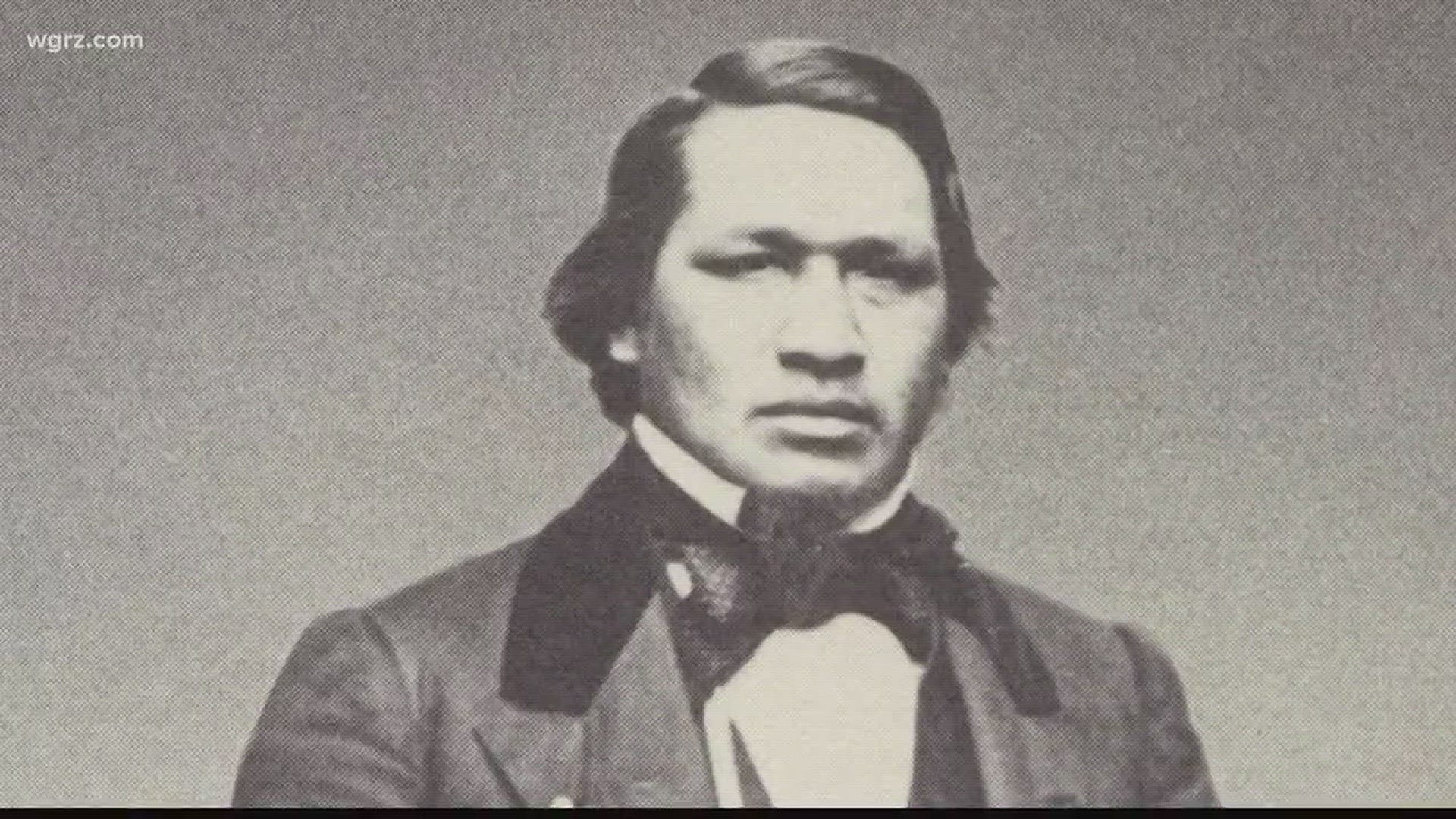Al Parker is a descendant of Ely Parker. He has devoted a good part of his life to educating people about the achievements of this great Western New Yorker.
Al portrays Ely in Civil War reenactments and public presentations.
"I stand before you in, I shouldn't say in the footsteps of Ely Parker, because that's quite an accomplishment," he said.
William Shakespeare once said, " Some are born great, some achieve greatness, and some have greatness thrust upon them." In the case of Ely Parker, all three may be true. Even before he was born in 1828, his Mother Elizabeth, in consultation with Native seers, had a vision of a great future for her son.
"It was a rainbow, from one end to the opposite end were both cultures. The sun would set one the final territories, and begin over here, that was what she saw, it was interpreted in a vision, that he would become a great man in both worlds," he said.
Elizabeth Parker's vision could not have been more accurate. Ely Parker did indeed become a Warrior In Two Worlds, but his path was never easy. He was highly educated and fluent in both the Seneca and English languages. After graduating college, Ely began to study law with a firm in Ellicottville, then applied to take the bar exam. It was to be but a taste of future frustration .
"The call was that he was naturally born, but at the same time he wasn't a US citizen, so that shut him down as far as any work as an attorney," he said.
"No, he wasn't a citizen, neither were Africans, people of African descent, the slaves. And it wasn't just because they weren't white, that was part of it, but it was that they weren't really considered to be persons," said Keith Burich, a retired Canisius College history professor
Despite this deluge of ignorance and hatred, Parker soldiered on. In the 1840's ,he met and befriended Lewis Henry Morgan, whom he helped write the book "The League Of The Haudenosaunee", which Burich describes as a definitive history of the Iroquois people.
"He provided Morgan with access to information that went into this book, and that book really preserved a lot of history and culture of the Iroquois, and Parker was instrumental in that regard, because a lot of that was lost," Burich said.
Parker's leadership qualities were also recognized by the Seneca people. He was made a Sachem, or Chief , in 1852.
"So now he's responsible to the Nation, to the people, now he's got a dual role, two roles." Explains Al Parker . " His ability to handle local issues and at the same time his ability to work with the state and federal government, treaties and what have you," Parker said.
About that time, Parker also attended Rensselaer Polytechnic, graduating and then becoming an engineer, contributing to the upkeep of the Erie Canal. As a Supervisor Of Government Projects, his fate took another turn. It was through this job that he became friends with Ulyssses Grant.
The two became fast friends, and when Grant became Commander of the Military Division Of The Mississippi, he made Parker his Adjutant. As Grant rose in stature, so did Parker, eventually becoming a Lieutenant Colonel and military secretary to Grant. This despite the fact that when he tried to enlist, he was rejected because of his race.
"He served Grant through the worst of the Civil War, beginning with Vicksburg in 1863, right up until Appomattox in 1865. Parker was with Grant through the worst fighting of the war," Burich said
%INLINE% It was at Appomattox that Ely's legacy would become written in stone. Parker drafted the surrender documents at the Appomattox Courthouse in April of 1865. But even as Confederate General Robert E. Lee shook hands with Grant's staff before the documents were signed, the ugly spectre of bigotry made a brief appearance.
"And he got to Parker, and for a moment, and we'll never know, there's theories, there's stories, we'll never know. About him recognizing, because he was dark, didn't look like the rest of the guys, and so he gets to Ely, and it was just like a moment, he had a little hesitation, and then he said "Glad to meet one real American here." And Ely responded, "We're all Americans ".
After the war, Parker was named as the first Native American Commissioner of the Bureau of Indian Affairs, which at the time was rife with corruption. He was the chief architect of General Grant's peace policy with Native tribes and under his tenure, military actions against Indians were reduced and there was an effort to support tribes in their transition to lives on reservations. Unfortunately, he was eventually forced out of this position, undone by his old nemesis.
"If it hadn't been for the entrenched bureaucracy in the Office of Indian Affairs, he probably would have stayed on and done more," Burich said. "But there's no doubt that it wasn't just the corruption that stymied him, it was the fact that he was an Indian."
After the war, Ely led a successful private life, working for the NY City Police Department, and making, then losing, a fortune in the stock market. He lived out his last years in poverty, dying in Connecticut in August of 1895. In January of 1897, his widow had his body exhumed and brought to his final resting place at Forest Lawn Cemetery in Buffalo next to his ancestor, the great orator Red Jacket.
To this day his legacy lives on, and his dedication to a country that tried to deny him at every turn should be a lesson for all.
"He's an example setter, he's a role model . Native people here have forever been involved in protection...warriors ! And it comes down to the land, that's the bottom line. This is home territory," Parker said.

